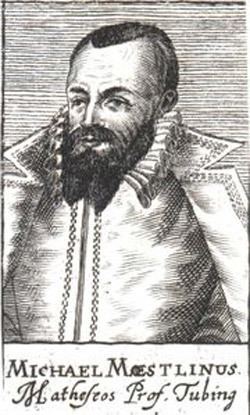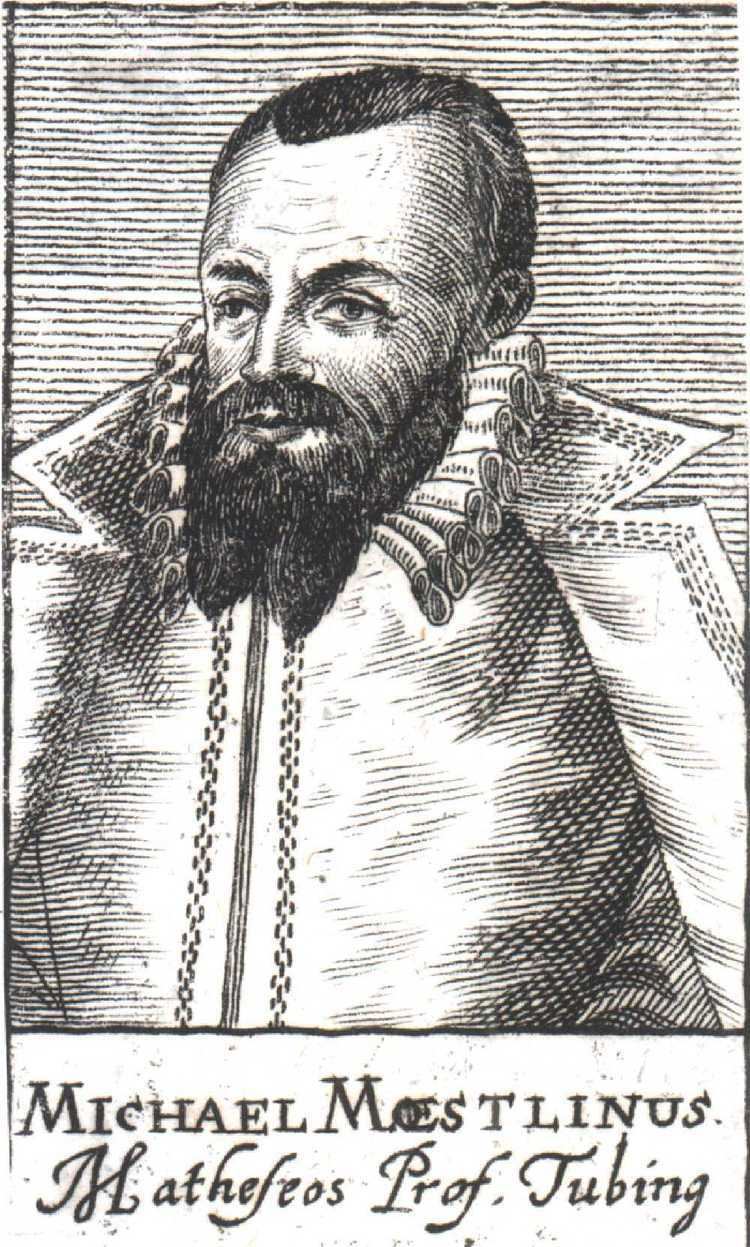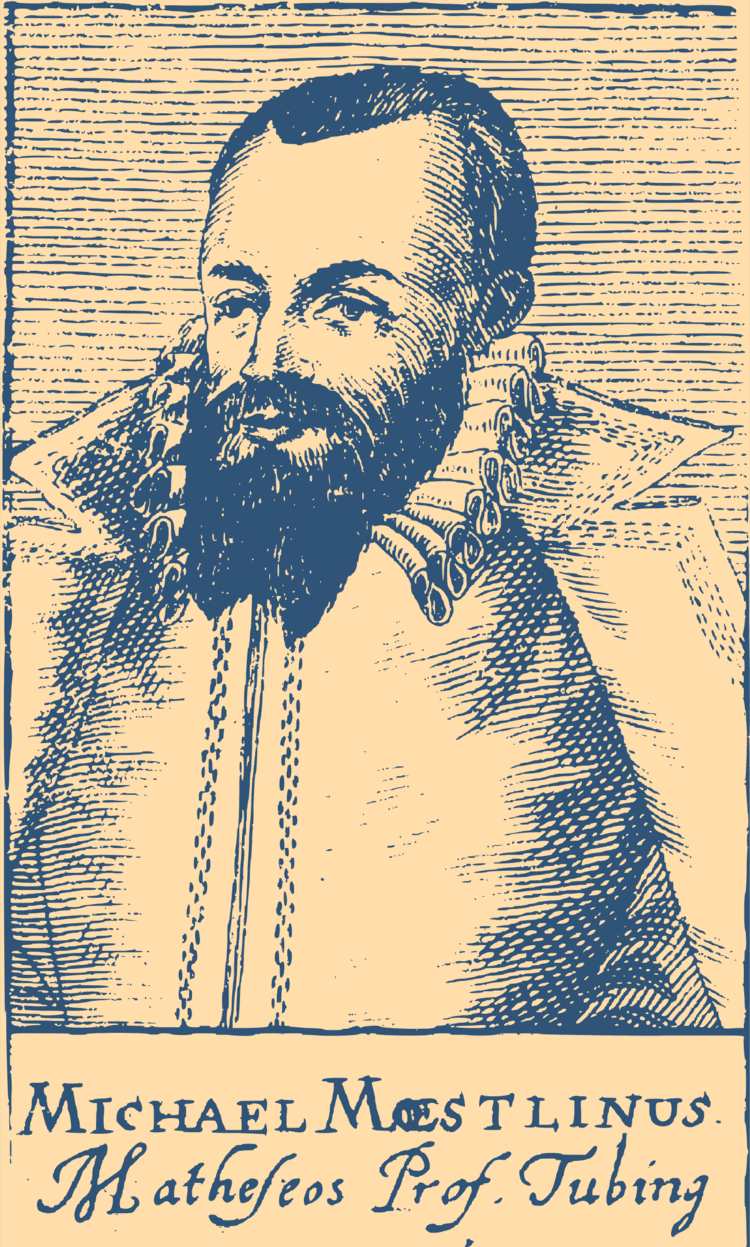Name Michael Maestlin Role Astronomer | Education Tubinger Stift | |
 | ||
Died October 20, 1631, Tubingen, Germany Similar People | ||
Michael Maestlin (also Mästlin, Möstlin, or Moestlin) (30 September 1550, Göppingen – 20 October 1631, Tübingen) was a German astronomer and mathematician, known for being the mentor of Johannes Kepler.
Contents

Career

Maestlin studied theology, mathematics, and astronomy/astrology at the University of Tübingen—the Tübinger Stift. (Tübingen was part of the Duchy of Württemberg.) He graduated as magister in 1571 and became in 1576 a Lutheran deacon in Backnang, continuing his studies there.
In 1580 he became a professor of mathematics, first at the University of Heidelberg, then at the University of Tübingen, where he taught for 47 years from 1583. In 1582 Maestlin wrote a popular introduction to astronomy.
Among his students was Johannes Kepler (1571-1630). Although he primarily taught the traditional geocentric Ptolemaic view of the solar system, Maestlin was also one of the first to accept and teach the heliocentric Copernican view. Maestlin corresponded with Kepler frequently and played a sizable part in his adoption of the Copernican system. Galileo Galilei's adoption of heliocentrism was also attributed to Maestlin.
The first known calculation of the (inverse) golden ratio as a decimal of "about 0.6180340" was written in 1597 by Maestlin in a letter to Kepler.
Notable astronomical observations
Legacy
In Jules Verne's Cinq semaines en ballon (Five Weeks in a Balloon) the character of Joe, the manservant, is described as enjoying, "in common with Moestlin, Kepler's professor, the rare faculty of distinguishing the satellites of Jupiter with the naked eye, and of counting fourteen of the stars in the group of Pleiades, the remotest of them being only of the ninth magnitude."
